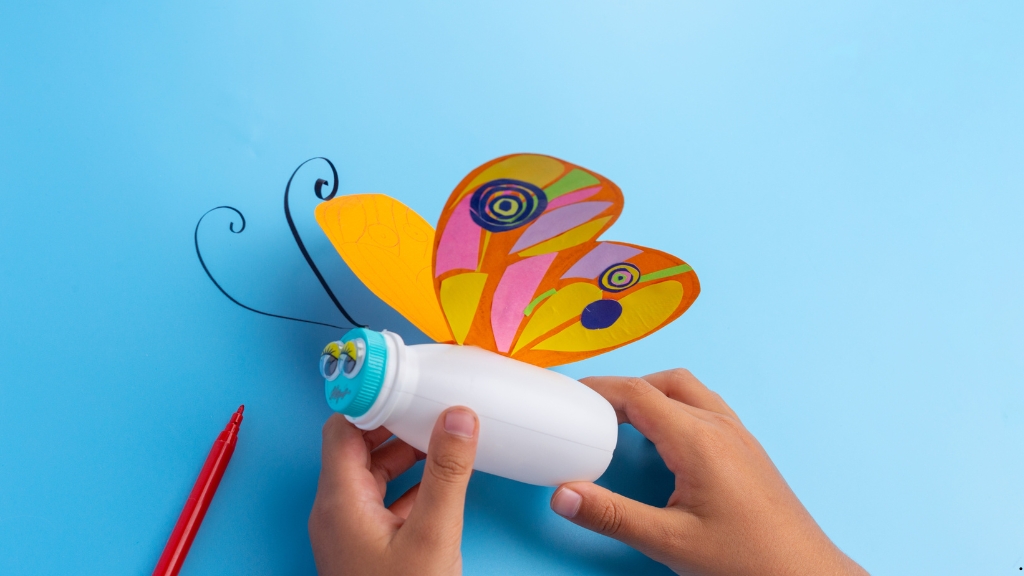
The Art of DIY: Transforming Spaces with Simple Tools for Creative Home Makeovers
There's something incredibly satisfying about taking a dull space and turning it into something beautiful with just a few simple tools. I’ve always believed that DIY isn’t just a hobby; it’s an art form that allows us to express our creativity while making our surroundings more functional and inviting. Whether it’s a weekend project or a quick afternoon refresh, the possibilities are endless.
The Art of DIY: Transforming Spaces with Simple Tools
DIY projects use simple tools to create impactful changes in any space. Whether it’s a paintbrush, screwdriver, or a basic toolkit, these tools enable my creativity to shine.
Essential Tools for DIY Projects
Paintbrushes: Different sizes allow for detailed painting and broad strokes.
Screwdrivers: Phillips and flathead types secure fixtures in place.
Hammers: A basic hammer helps with any nailing task.
Tape Measure: Accurate measurements ensure furniture fits perfectly.
Utility Knife: Ideal for cutting various materials cleanly.
Techniques for Transformation
Painting Walls: A fresh coat of paint instantly updates a room's look.
Upcycling Furniture: Transform old furniture with paint or new hardware.
Installing Shelves: Floating shelves add storage and display space.
Creating Accent Walls: Use wallpaper or paint for a focal point.
DIY Lighting Fixtures: Replace outdated fixtures with new designs.
Project Ideas to Inspire
Customized Planters: Use basic materials to create unique plant holders.
Wall Art: Create canvas art or framed prints to personalize spaces.
Cushion Covers: Sew or knit cushion covers to add color and comfort.
Home Organization: Build storage solutions from crates or pallets.
Outdoor Decor: Use simple tools to enhance garden areas with decor.
By utilizing simple tools and techniques, I can create stunning changes in my home. Embracing the art of DIY nurtures my creativity while making my spaces uniquely mine.
Essential Tools for Every DIY Enthusiast
Equipping myself with the right tools makes all the difference in my DIY projects. Below are the essential hand tools and power tools I rely on to transform spaces effectively.
Hand Tools
Hammer: A versatile tool for driving nails and breaking objects.
Screwdriver: Essential for tightening or loosening screws; includes flathead and Phillips styles.
Tape Measure: Crucial for measuring spaces accurately to ensure proper fit for furniture and decor.
Utility Knife: Great for cutting various materials, like cardboard and rope; easily replaced when dull.
Pliers: Perfect for gripping, twisting, and cutting wire or small hardware.
Level: Ensures surfaces and installations are perfectly horizontal or vertical.
Chisels: Useful for carving or shaping wood to create detailed designs.
Power Tools
Cordless Drill: Ideal for drilling holes and driving screws quickly without cords getting in the way.
Electric Sander: Provides a smooth finish on wood surfaces, speeding up the sanding process significantly.
Jigsaw: Excellent for cutting curves and complex shapes in wood, plastic, or metal.
Circular Saw: Fundamental for making straight cuts in various materials; essential for larger projects.
Impact Driver: Delivers high torque for loosening stubborn screws or bolts efficiently.
Dremel Tool: Versatile for engraving, cutting, and sanding in tight spaces or intricate designs.
Nail Gun: Saves time and effort when fastening pieces of wood or framing structures.
These essential tools serve as the foundation for any DIY endeavor, empowering me to bring creativity and functionality to my projects.
Creative Ideas for Transforming Spaces
Transforming spaces can infuse new life into existing areas. Here are some practical ideas for achieving impactful changes.
Living Room Makeover
Select a bold paint color to create a focal point. Hang an accent wall in a deep hue or a striking pattern using removable wallpaper. Choose to upcycle furniture pieces, like repainting an old coffee table or reupholstering chairs to align with your style. Incorporate DIY lighting fixtures to elevate the ambiance, such as creating a pendant light using simple materials. Add personalized art to your walls with framed prints or DIY canvas designs, which can enhance your living room's character. Employ functional decor, such as built-in shelves for books and plants, ensuring aesthetics and practicality coexist.
Outdoor Transformation
Revamp outdoor spaces with DIY planters crafted from reclaimed wood or upcycled materials. Paint them in vibrant colors for a cheerful touch. Install string lights for a cozy evening atmosphere, using basic hooks and LED bulbs. Create a lounge area by building a simple bench or refurbishing old outdoor furniture. Use decorative stones or gravel for pathways, enhancing the outdoor aesthetic while providing functionality. Craft a fire pit using bricks or pavers, transforming the space into a gathering spot. Combine greenery with simple landscaping projects, ensuring a lush environment that complements relaxation and entertainment.
Tips for Successful DIY Projects
Effective DIY projects rely on careful planning and safety precautions. I focus on these aspects to ensure a smooth and rewarding experience.
Planning and Budgeting
Define your project goals clearly to understand the desired outcome.
Research similar projects for inspiration and practical ideas.
Create a detailed list of materials and tools needed for the project.
Set a realistic budget, factoring in materials, tools, and unexpected costs.
Estimate the time required for each phase to maintain a steady workflow.
Consider seasonal factors when planning outdoor projects, ensuring ideal conditions for execution.
Safety Precautions
Wear appropriate safety gear like gloves, goggles, and masks to protect against dust and sharp objects.
Keep your workspace organized to avoid accidents and misplaced tools.
Read the instructions for tools and materials carefully before use for proper handling.
Ensure proper ventilation when working with paints or strong adhesives to prevent inhalation of fumes.
Utilize tools at their recommended capacity to prevent malfunctions and personal injury.
Store tools safely when not in use, ensuring they’re out of reach of children and pets.
Showcasing Your DIY Success
Showcasing DIY successes transforms not just your space but also your sense of achievement. Displaying finished projects enhances your home’s appeal while inspiring others to embark on their own DIY journeys.
Photography: Capture high-quality images of your completed projects. Use natural lighting and clean backgrounds to highlight details effectively. Show before-and-after photos to illustrate the transformation clearly.
Social Media: Share your projects on platforms like Instagram and Pinterest. Use hashtags relevant to DIY, like #DIYProjects or #HomeImprovement, to reach a wider audience. Engaging captions can draw viewers in and encourage interaction.
Home Tours: Incorporate your DIY projects into home tours, whether virtual or in person. Showcase each space, explaining the processes involved and the materials used. Invite friends and family over for an open house to celebrate your work.
Create a Portfolio: Compile a digital or physical portfolio of your DIY successes. Include project descriptions, materials used, and step-by-step processes. This can serve as a reference for future projects or as inspiration for others.
Blogs and Vlogs: Start a blog or YouTube channel dedicated to your DIY projects. Share tutorials, tips, and personal stories. Engaging narratives alongside project details can connect with viewers and encourage them to try similar endeavors.
Local Workshops: Host workshops in your community to share your skills. Teaching others enhances your profile while reinforcing your knowledge. Hands-on demonstrations allow participants to learn directly from your experience.
Online Community Engagement: Join DIY forums and Facebook groups. Share your projects and solicit feedback. Engaging with the community can provide fresh ideas and foster connections with like-minded individuals.
Gratitude Acknowledgment: Acknowledge those who inspired or assisted you along your DIY journey. Give credit to authors, websites, or friends whose ideas contributed to your project. This builds a network of support and inspiration within the DIY community.
By utilizing these methods, I can not only showcase my DIY successes but also inspire others to embrace their creativity and transform their spaces uniquely.
Conclusion
Embracing the art of DIY has truly transformed how I view my living spaces. With just a few simple tools and a spark of creativity I can turn any dull area into a vibrant reflection of my personality. Each project not only enhances my home but also brings a sense of accomplishment that’s hard to match.
I encourage you to dive into your own DIY journey. Whether it’s a weekend overhaul or a quick afternoon fix the possibilities are endless. Remember that every small change contributes to a more inviting and functional space. So grab your tools and let your imagination run wild. You might just surprise yourself with what you can create.


